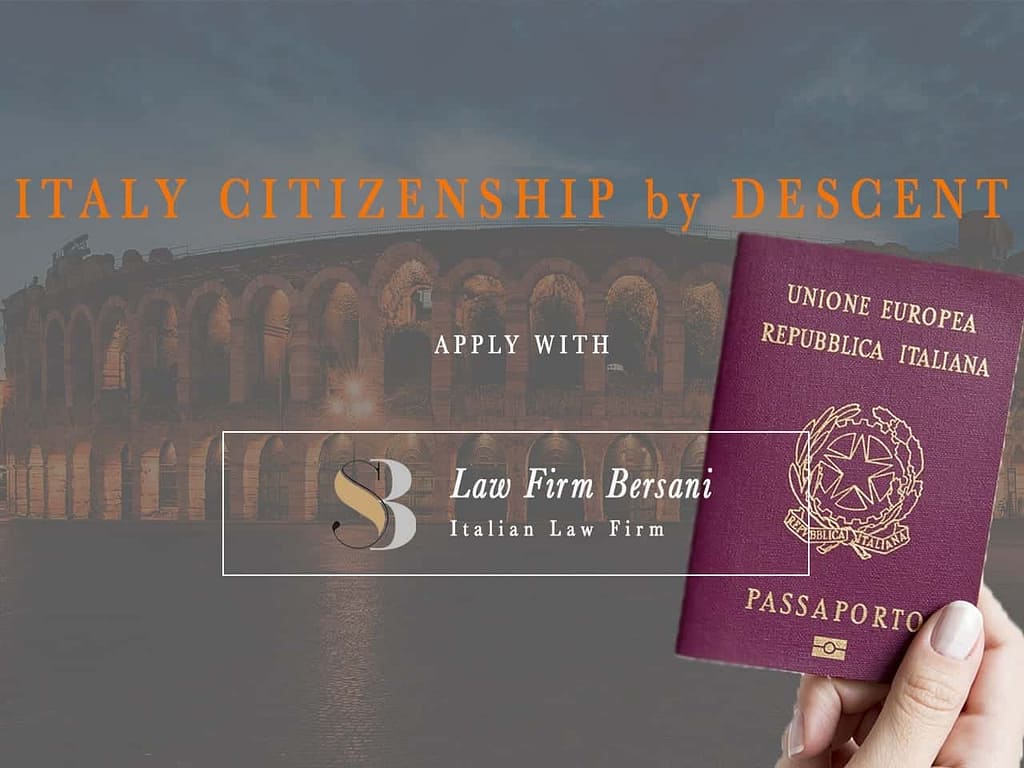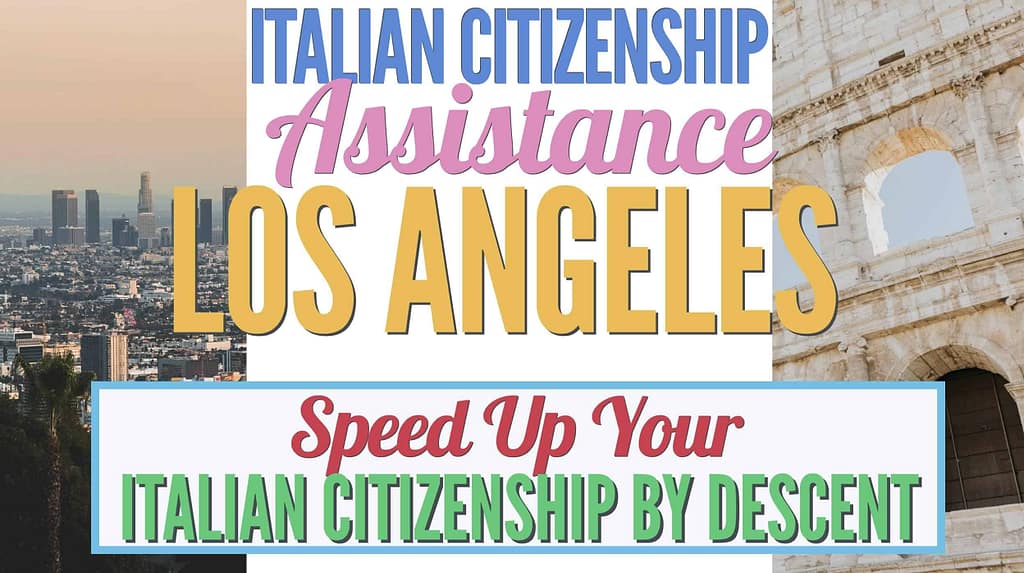|
Listen to this article!
Getting your Trinity Audio player ready...
|
Italian Citizenship by Descent: How 1948s Cases Work?
Today’s article is dedicated to those of you who are interested in Italian citizenship by descent and have to go the “1948 route”, that meansItalian Citizenship by Descent 1948 Case, from Female Descent.
We already talked about also Here and Here, but seems to be a lot of confusion in regards to what the process entails, also because Minister of Internal Affairs doesn’t provide any official informations.
We will also briefly compare the “1948”/judicial process and the “normal”/administrative process.
First, let’s quickly cover when it would be necessary to start an Italian Citizenship by Descent 1948 case:
If your Italian ancestral line includes a woman, you should first check if your female ascendant gave birth to her child before or after 1948.
- If she gave birth before 1948 – it was not possible for women (born in Italy or from Italian descent) to transfer Italian citizenship to their children, the reason being is that Italian women did not have the same rights as men before 1948 (including the right to vote and pass citizenship to their heirs).
- However, if your female ancestor gave birth during or after 1948 – Italian women were granted the same rights as men to pass down Italian citizenship (along with the right to vote) on January 1st, 1948. Due to this “new” set of rights, any child born to an Italian-born woman, or woman of Italian descent born abroad, can be considered able to receive Italian citizenship at birth.
If your case falls into the “Italian Citizenship by Descent 1948” category, because your family line back to Italy involves a female ancestor who gave birth to the next person in your family line before January 1st, 1948, you will need to pursue Italian citizenship in the Italian Courts
Italian Citizenship by Descent 1948 Case means it can be processed only with an Attorney through Italian Court.
Having to go the “1948” route through the judicial process does not necessarily mean that the overall process will be longer or more difficult.
Instead, it can be – sometimes – less longer.
Simply, you are making your claim to Italian citizenship in a different manner than the more common administrative process.
The biggest difference being that you need to petition the Italian Court of Rome to achieve recognition as an Italian citizen during the 1948 process (the judicial process) whereas the administrative process involves getting your documentation evaluated either by an Italian Consulate or Italian Municipality. At this point in time 1948 cases are only handled in Italian court.
To clarify, what’s different about the administrative process and a 1948 case, is that you’ll need to file a proper claim before the Civil Court in Rome (“Tribunale Ordinario di Roma – Sezione Civile”) in order to have your case examined by an appointed judge.
This does not mean that it’s any less likely or more difficult to successfully complete the process.
In fact, hundreds of Italian Citizenship by Descent 1948 Cases have been positively judged since 2009 and the Italian State is generally no longer representing itself in court anymore or make counterclaims against the above point – meaning that the retroactivity of the Constitution with regard to Women’s right to transmit their Italian citizenship is widely recognized as a “Case Law”, which means the previous judicial judgments have strong legal authority.
So, how Italian Citizenship by Female Descent works? We can syntetically describe it as below:
STEP 1: Procurement of the supporting vital record documents
It will be necessary to retrieve all the records of birth, marriage and death records pertaining to each person in your Italian family line.
For example:
*You* – Birth and marriage certificates (and any birth certificates of any children you have and vital records of any of their major life events)
Your parent – Birth, marriage and death certificate (if applicable)
Your grandparent – Birth, marriage and death certificate (if applicable)
Side notes:
*presenting just the documents pertaining to your ascendants in the Italian line is sufficient. This does not mean that also presenting “non-line relative’s documents” is wrong. In fact, to support your petition, you can present all the documents that you deem appropriate to build a strong case. This just means that courts are generally satisfied with the “in-line relative’s documents”.
*In Lieu of a birth certificate a baptismal record is sometimes acceptable. However, if a birth certificate can be presented it is preferred.
*if you or anyone in your line have had a legal name change or divorce, it may also be important to have the documents which show those events to justify potential modification of names or last names.
STEP 2: Legalize all the documents retrieved
Every non-Italian document will need to bear an apostille, which is a special authentication seal enabling a document to be used in Italy.
STEP 3: Certify all of the translations
Translations for documents which are not in the Italian language will need to be certified for accuracy before they can be used for your judicial proceeding.
There are two ways of having your translations certified:
- Translations can be certified by an Italian judicial authority through a special procedure called “Asseverazione delle Traduzioni”. This process has two parts. The first is that the translations will need to be performed by a well-acquainted translator in Italy, and second, the translator will need to swear to the accuracy of the translations in front of a Judicial authority in Italy.
We can provide this Service as required. - Translations can be certified by your local Italian consulate through a special procedure called “Certificazione di Conformità di Traduzione”. The related fee can be found under article “72A” in the trimestral chart of the Consular Fees (available through any consulate’s website). The consulate will generally accept “plain” translations accompanied by the corresponding original documents. Some consulates will provide you with a “Certification of Translation Request Form”. We always recommend checking your consulate’s policies on the matter before mailing any original documents to them.
STEP 4: Appoint an Italian attorney to represent you at court in Italy
When it comes to 1948 cases you will definitely need to rely on an attorney with relevant experience, since these cases are very peculiar and not every Italian attorney will have the necessary expertise or the experience to assist you in this process. In addition, being represented by an attorney means your presence at court will not be required at any time.
We are, of course, at disposal for any Judicial Assistance You need.
STEP 5: Sign a P.O.A. for your Italian Citizenship Lawyer
The Power of Attorney (PoA) will allow Law Firm Bersani in Italy to represent you in court for your citizenship petition/claim.
The original POA notarized document will need to be mailed to your attorney. Every co-petitioner (meaning a relative who shares the same ancestor and participates in the lawsuit) will also need to grant power of attorney to your chosen representative.
Side-note: if you have minor children, you will also need to sign a POA on their behalf. This way they will be included in your claim.
If filing a claim with multiple adult petitioners, each adult petitioner will need to sign his/her own separate POA and an additional POA for each of their minor children (if applicable). Typically the attorney will file just one petition, and enclose all the POAs together with the petition.
STEP 6: Send all the documents and original POAs to Law Firm Bersani
All vital record documents to support your case, as well as each necessary POA must be sent to your attorney.
*Originals of all documents mentioned are necessary – photocopies are not useable.
STEP 7: Preparing your petition
With all the documents in hand, We will run through all the details of your case and prepare the actual petition to be filed in court.
STEP 7: ”Your” day in court
The first hearing serves just to preliminary evaluate the case. At this time, the judge assesses the main focal points of the case and asks if any clarifications are necessary.
In the majority of the cases one hearing is sufficient. However, it is possible a second hearing is required by the judge if further clarifications or documents are deemed as necessary.
STEP 8: Final judgment
The final judgment is generally issued within 2-3 months from the (final) hearing. In the final judgment the judge will explain why the petitioner is or isn’t entitled to Italian citizenship.
If the decision is favorable (which is the vast majority of cases), it will order the vital statistics office (generally the one of the municipality of birth of the Italian ancestor) to record the judgment itself and all the vital record documents pertaining to the petitioner(s).
STEP 9: Registering Yourself as Italian Citizen
Once your citizenship is recognized with a court order, all the vital records pertaining to the applicants will need to be registered in the Italian Municipality where your ancestor was born.
The actual court order is the document which will entitle you to have your records registered in Italy.
We also provide assistance on this post-Court moment.
Do You Think to be eligible for Italian Citizenship Application?
or through Italian Citizenship by Descent 1948?
or through naturalization by way of marriage or residency?
**
We assist EU and non EU citizens with immigration and visa matters, as well as residence registrations.
We offer a comprehensive service tailored to the needs of each case. All cases listed here
Our services include advice on immigration law, cross-border implications related to Italian Dual Citizenship, Investor Golden Visa Italy,(See also here for Investor Golden Visa benefits) preparation of visa, permit to stay and residence applications, tax aspects, avoidance of dual taxation, (more informations also here)

